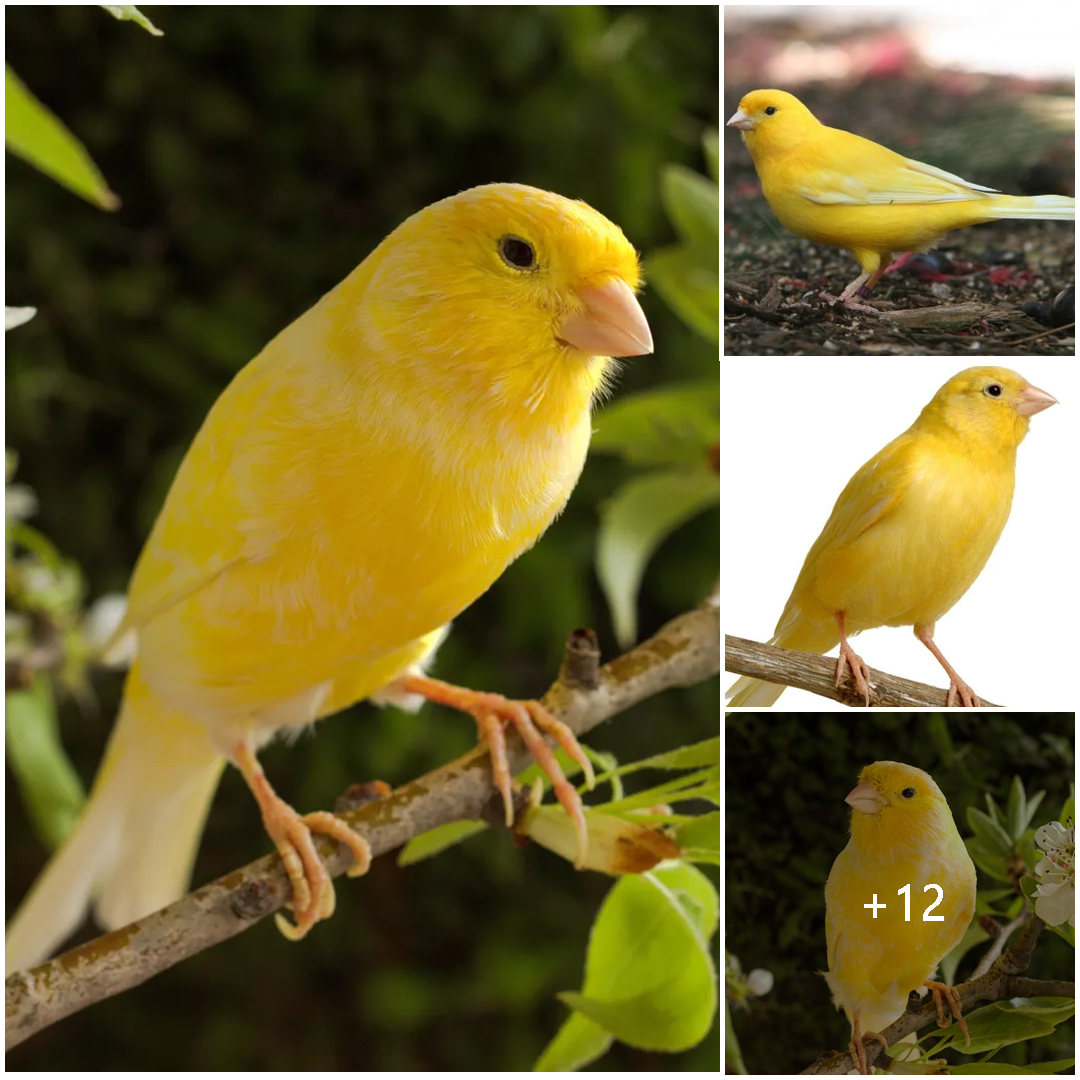
The Canary, scientifically known as Serinus canaria, is a small songbird belonging to the finch family, Fringillidae. Renowned for its melodious song and vibrant plumage, the Canary has captured the hearts of bird enthusiasts worldwide for centuries. Let’s delve into the captivating world of this charming avian species.
Physical Characteristics: Canaries typically measure between 4.7 to 8.7 inches (12 to 22 centimeters) in length, with males often being slightly larger than females. Their plumage comes in a wide array of colors, including yellow, orange, white, red, and even variegated combinations. The most iconic color associated with Canaries is yellow, reminiscent of the Canary Islands where they were originally found.
One distinctive feature of Canaries is their conical-shaped bills, ideal for cracking open seeds, their primary dietary staple. Additionally, they possess strong, agile legs well-suited for perching and hopping.
Natural Habitat: Originally native to the Canary Islands, located off the northwest coast of Africa, these birds inhabit a variety of environments ranging from forests and scrublands to coastal areas. They are particularly fond of semi-arid regions with ample vegetation and access to water sources.
Historical Significance: The history of Canaries intertwines with human civilization, dating back to ancient times. It is believed that the ancient Romans and Greeks first brought Canaries from the Canary Islands to mainland Europe, where they were prized for their enchanting songs and vibrant plumage. Over the centuries, selective breeding efforts led to the development of various breeds, each with its own unique characteristics.
During the 15th and 16th centuries, Canaries gained immense popularity among European nobility and royalty as prized pets and status symbols. They were often depicted in art and literature, symbolizing wealth, luxury, and refinement.
Cultural Significance: Canaries have left an indelible mark on culture and the arts. Their sweet, melodious songs have inspired composers and musicians throughout history. Canaries were often kept as caged birds in homes and courtyards, where their songs provided a source of joy and entertainment.
In addition to their musical prowess, Canaries have appeared in folklore and symbolism across various cultures. They symbolize happiness, freedom, and the beauty of nature. In some cultures, they are also associated with good luck and prosperity.
Modern Role: Today, Canaries continue to be cherished as beloved pets and performers. While they are no longer as prominent in aristocratic circles, they remain popular among bird enthusiasts and hobbyists worldwide. Breeders continue to develop new color variations and strains, ensuring the perpetuation of this beloved avian species.
In addition to their role as pets, Canaries are valued for their contributions to scientific research. Their vocalizations and behaviors are studied to better understand avian communication and cognition, shedding light on broader questions of animal behavior and intelligence.
Conservation Status: While Canaries are not currently considered endangered, habitat loss and the illegal pet trade pose ongoing threats to wild populations. Conservation efforts are underway to protect their natural habitats and prevent illegal trapping and trade.
In conclusion, the Canary is much more than a beautiful bird with a captivating song. It is a symbol of history, culture, and the enduring bond between humans and nature. As we continue to appreciate and protect these enchanting creatures, we ensure that their legacy will endure for generations to come.





